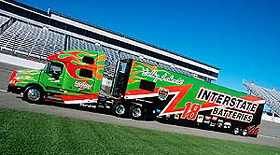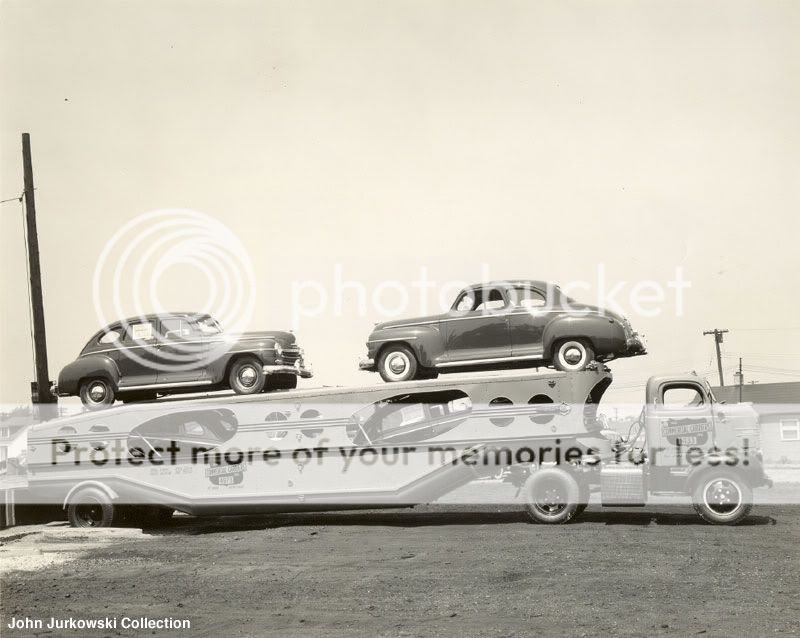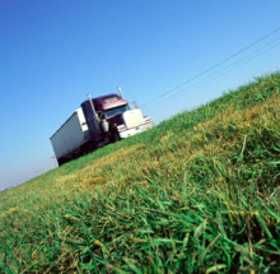Trucking Queries From An Outsider (Part II)
Topic 2186 | Page 1

Preparing a truck for a trip can be Dependant on the freight you are hauling. But basically you get your trip info. Preplan or trip plan your route,including fuel stops and breaks. You pretrip your truck and trailer to make sure its safe and road worthy. We have sections on the site that go in depth of pretrip so I will not go into it here. Pretty much after the above is done you are ready to start your trip. Basically this is followed and done for each and every trip.
Most companies will have fuel pumps at their main terminal and maybe a few other small terminals but for the most part they rely on truckstops for fuel.
Most company trucks have a device in their truck call a Prepass which allows us to bypass weight stations mostly if we get a green light. But there are always those few we have to pull into for one reason or another.
Terminal:
A facility where trucking companies operate out of, or their "home base" if you will. A lot of major companies have multiple terminals around the country which usually consist of the main office building, a drop lot for trailers, and sometimes a repair shop and wash facilities.
HOS:
Hours Of Service
HOS refers to the logbook hours of service regulations.
Hi, everybody
Thanks again to the kind folks who answered my previous truck driving questions. I really appreciate it. I've got a few more questions today and could really some explanation if somebody wouldn't mind.
For company drivers, what is the complete procedure that drivers typically undergo before embarking on each trip? From what I've seen on television shows, workers measure freight for length, width, etc., but are there other important steps/precautionary measures companies employ to prepare a truck before its journey? Also, are there typically fuel pumps at the companies where drivers work where one can fill his/her tank, or do people simply rely on roadside stations when they need to fill up?
Also, how often during a delivery do truck drivers have to pull into weigh stations? Is it just a one-time thing per trip or do drivers have to stop as they enter a different state or something?
Again, pardon my ignorance of this subject area. I'd be utterly grateful for any insight someone could provide.
As for trip preparation, duties vary depending on truck and trailer type. All drivers will inspect the rig and trailer for safety and reliability. You can go to any truck stop and buy a inspection log book which lists all the things they check on, and more experienced drivers will know the equipment they operate well enough to know if they have to check additional items. Dry van's are often locked or have a seal on them to ensure know one has tampered with food products, so a driver can't check for load shift, etc. That's not to say that I have not broken a seal if I hear a strange bang or boom. I also note the time and location of such events to ensure the receiver that it was me and not some form of tampering. They still have the right to refuse the load, but I feel the driver has a right to know what is going on with it as well. Only happened to me once. When hauling a flatbed trailer I will inspect the usual; tires, brakes, lights, etc. but also look for any loose items on the deck left by the loader and often find cups, bottles, and junk like that mostly on hot days. Even if its a plastic bottle with a little water in it and can't hurt a car behind you it could still scare the s**t out of someone and make them swerve and ... We also check all straps ensuring they are snug, in good condition and that their are enough for the weight being carried. Straps will be checked often through the trip to ensure they didn't loosen up as freight settles. If a driver fails to notice improper load placement the load can shift causing straps to become very loose and dangerous. The list goes on and gets even longer for car haulers, low-boys, reefers, and other equipment. Truckers have far more responsibility than the average person would ever consider, and if people knew the care and concern we put into these tasks they would respect the average trucker far more than they do now. I could go on and on to answer this question, but ya only get so much for free. LOL.
Can't tell you about all companies, but due to the costs related to installing and maintaining fuel tanks, regulatory requirements, possible additional employees and more it seems most companies fuel at truck stops. Larger companies negotiate deals for reduced prices based on volume purchased, etc.
Scales are a crap shoot. Much like a random drug test as best as I can tell. More often than not you will come across scales shortly after crossing a state line. (Port of entry) These are the scales that are often open 24/7. Many of them will used cameras to record your license plate number, some have "weigh in motion" scales so they know about what you weigh about 1/2 mile before you get to the scale, and some have a overhead camera recording the driver as he goes over the weigh in motion scale. The official can see if you look over-tired, tell if you are potentially overweight, get a plate number for use in case you don't pull in when required, etc. Often you will get a bypass signal prior to the scale exit, or a bypass on the exit ramp, take a designated 35 mph lane, and can get right back on the road without using the slow lane to be weighed. If you haul for a carrier with a bad safety score they will see that since they enter your DOT number and this can affect how often you get pulled in for inspections or to have driver log books reviewed. Many companies with good track record use electronic communications when approaching the scales and are bypassed and you can google that for more info. I've run from Portland OR. to Nogales AZ. and back without going over a scale, then from Portland to Seattle and back and get weighed 4 times. Volume of freight traffic will determine high traffic freight "lanes" and these will generally have more scales.
DOT:
Department Of Transportation
A department of the federal executive branch responsible for the national highways and for railroad and airline safety. It also manages Amtrak, the national railroad system, and the Coast Guard.
State and Federal DOT Officers are responsible for commercial vehicle enforcement. "The truck police" you could call them.
Dry Van:
A trailer or truck that that requires no special attention, such as refrigeration, that hauls regular palletted, boxed, or floor-loaded freight. The most common type of trailer in trucking.Reefer:
A refrigerated trailer.
OOS:
When a violation by either a driver or company is confirmed, an out-of-service order removes either the driver or the vehicle from the roadway until the violation is corrected.

Most company trucks have a device in their truck call a Prepass which allows us to bypass weight stations mostly if we get a green light. But there are always those few we have to pull into for one reason or another.
I-65 north leaving AL entering TN. I NEVER get a green light on that scale!
HOS:
Hours Of Service
HOS refers to the logbook hours of service regulations.New Reply:
New! Check out our help videos for a better understanding of our forum features

















Preview:








 TT On Facebook
TT On Facebook
Hi, everybody
Thanks again to the kind folks who answered my previous truck driving questions. I really appreciate it. I've got a few more questions today and could really some explanation if somebody wouldn't mind.
For company drivers, what is the complete procedure that drivers typically undergo before embarking on each trip? From what I've seen on television shows, workers measure freight for length, width, etc., but are there other important steps/precautionary measures companies employ to prepare a truck before its journey? Also, are there typically fuel pumps at the companies where drivers work where one can fill his/her tank, or do people simply rely on roadside stations when they need to fill up?
Also, how often during a delivery do truck drivers have to pull into weigh stations? Is it just a one-time thing per trip or do drivers have to stop as they enter a different state or something?
Again, pardon my ignorance of this subject area. I'd be utterly grateful for any insight someone could provide.